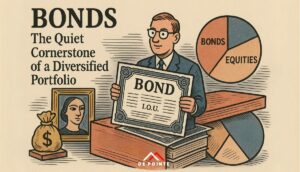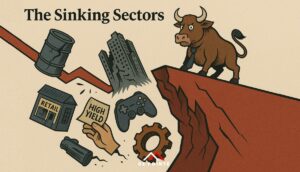Article

The Royal Ascot is not just an iconic horse racing event; it’s a microcosm of strategy, discipline, and high-stakes decisions that mirror the world of investing. For those looking to sharpen their investment skills, there are valuable lessons to be learned from the elite horse racing culture at Ascot. Let’s delve into how the principles that drive success on the track can be applied to your investment portfolio.
Research and Analysis
Just as thoroughbred owners and trainers meticulously research bloodlines, track conditions, and competitor stats, successful investors must conduct comprehensive research and analysis before making decisions. At Ascot, understanding the nuances of each horse’s performance and pedigree can spell the difference between winning and losing. Similarly, investors should delve deep into financial statements, market conditions, and industry trends to make informed choices.
Investment Tip:
- Prioritise due diligence.
- Analyse the fundamentals of any investment opportunity, whether it’s stocks, real estate, or bonds.
- Look at historical performance, market conditions, and potential risks.
Risk Management
Horse racing at Ascot involves significant risk, but successful participants know how to manage it. They don’t bet their entire fortune on a single race. Instead, they spread their bets across several horses or races, balancing potential risks with potential rewards.
Investment Tip:
- Diversify your portfolio to manage risk effectively.
- Don’t put all your money into one stock or sector.
- Spread your investments across different asset classes to mitigate potential losses and enhance overall returns.
Discipline and Patience
Winning at Ascot requires discipline and patience. Trainers spend years preparing horses for these moments, often facing setbacks and challenges. The ability to stay focused on long-term goals despite short-term fluctuations is crucial.
Investment Tip:
- Develop a long-term investment strategy and stick to it.
- Avoid reacting impulsively to market volatility.
- Patience and discipline can help you weather short-term market fluctuations and achieve your financial goals.

Understanding Market Conditions
At Ascot, understanding the track conditions, weather, and competition can provide a competitive edge. Similarly, investors need to be aware of the broader economic environment, interest rates, and geopolitical factors that influence market performance.
Investment Tip:
-
Stay informed about macroeconomic trends and how they affect your investments.
-
Regularly review and adjust your portfolio to align with changing market conditions.
Continuous Learning and Adaptation
The horse racing world is dynamic, with new training techniques, technologies, and strategies constantly emerging. Those who succeed at Ascot are those who continuously learn and adapt to new information and trends.
Investment Tip:
-
Embrace lifelong learning.
-
Stay updated with the latest investment strategies, market developments, and financial news.
-
Be open to adapting your investment approach based on new information and evolving market conditions.
The elite horse racing culture at Ascot offers more than just excitement and entertainment; it provides a rich source of insights for investors. By applying the principles of research, risk management, discipline, market awareness, and continuous learning, you can enhance your investment strategy and increase your chances of success. Just as the best trainers and jockeys prepare meticulously for the Royal Ascot, approach your investments with the same level of dedication and strategic thinking for optimal results.






